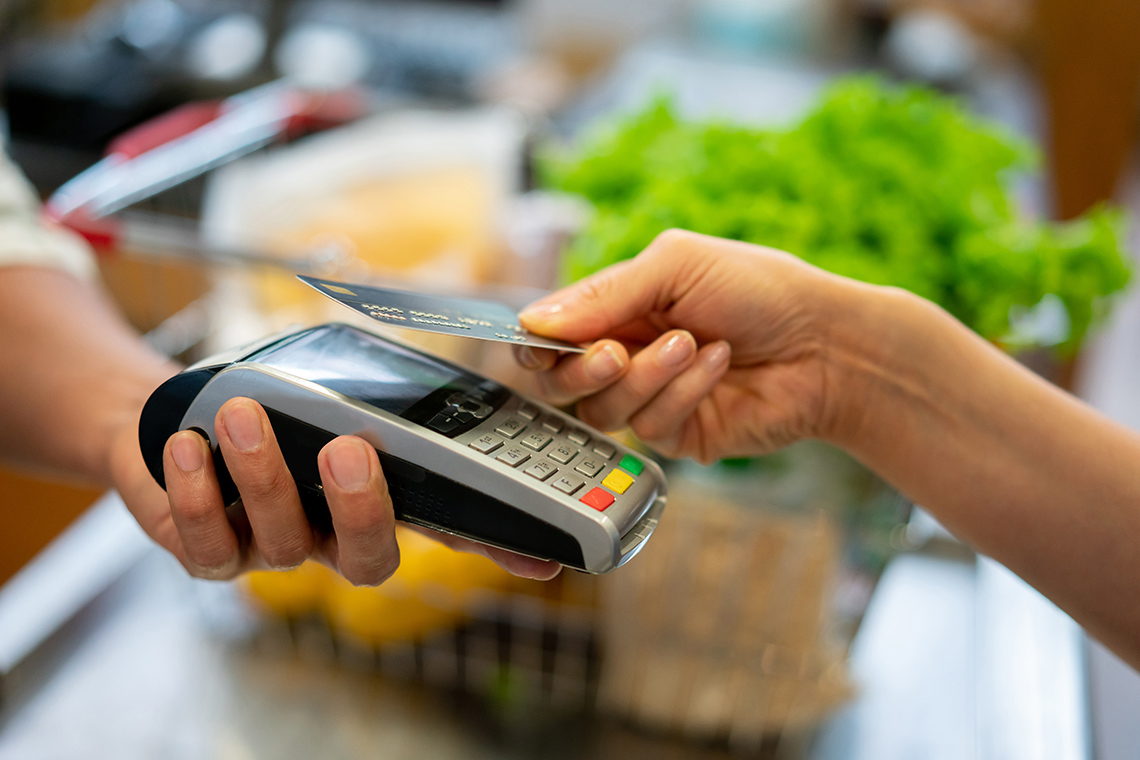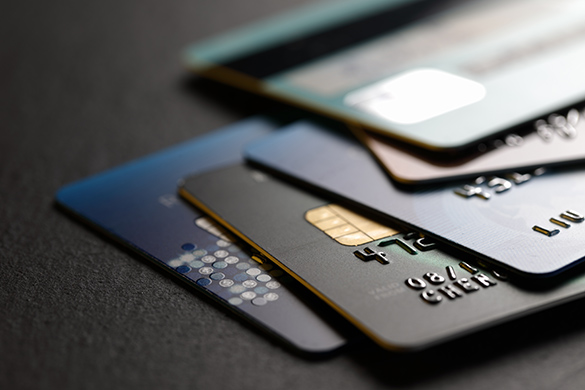Minds On
Ways to pay
What are different ways that people can pay for goods and services? What if someone was travelling in other countries? What methods of payment would be available to them to pay in different currencies?
Examine the following word cloud of vocabulary words to help you brainstorm some ideas to these questions.
 Description
Description
A word cloud of money terms. The words currencies, exchange rates, fees, service fees, interest, transferring money are emphasized. The other words are cash, credit card, debit, e-transfer, digital wallet, gift cards, loyalty points, money orders, wire transfers.
Complete the K and W columns of the following KWL Chart based on what you know (K) and want to know (W) about different methods of payment (skip the L column for now – we’ll revisit that at the end of the learning activity). As you complete the first two columns, consider both scenarios of making payments in someone’s home country as well as while travelling in other countries.
| K – what do you know about the topic? | W – what do you want to know about the topic? | L – what have you learned about the topic? |
Press the ‘Activity’ button to access the KWL Chart.
Action
Exploring payment vocabulary

Let’s explore some vocabulary by examining some of the terms represented in the word cloud from the Minds On section.
Can you match the term to its explanation?
For each money-related term, select the corresponding definition.
Methods of payment in Canada
In Canada, there are many different ways for people to pay for goods and services. We call these methods of payment.
Let’s examine a sample of some of the most common methods of payment used in Canada.
- physical money that you can hold and use to make purchases
- includes bills and coins
- any change from a transaction will be returned as cash

- a plastic card that requires a pin or tap feature to complete purchases
- a pin is required for larger purchases and the tap feature is used for purchases under a specific amount
- card is connected to your chequing or savings account
- expenses can be monitored and tracked online

- a plastic card that requires a pin or tap feature to complete purchases
- a pin is required for larger purchases and the tap feature is used for purchases under a specific amount
- money is borrowed from a bank or financial institution
- a chequing or savings account is used to pay the credit card bill at the end of the month
- expenses can be monitored and tracked online

Brainstorm
Brainstorm
At a grocery store, what methods of payment might someone use to pay for their groceries?
What if someone were booking a flight to another country? What methods of payment might they choose to pay for that?
Would any of the methods of payment be the same for both scenarios? Are some more appropriate for one scenario over the other?
If possible, share your thinking with a partner.
Methods of payment abroad
When travelling in other countries or making purchases online from global vendors and businesses, we need to consider our method of payment carefully as other currencies may be involved and exchange rates and fees are often a factor.
Brainstorm
Brainstorm

What might be a scenario where someone would need to transfer money to another country to pay for a good or a service?
Record your thinking in a notebook or using another method of your choice. If possible, share your thinking with a partner.
Let’s investigate some methods of payment available to someone when making a purchase or scheduling a service using a different currency.
Complete the Multiple Currencies Methods of Payment Chart in your notebook or using the following fillable and printable document.
| Payment method | What is it and how does it work? | Any advantages/ disadvantages or special considerations? |
|---|---|---|
| Cash | ||
| Debit card | ||
| Credit card | ||
| Electronic wallet (e.g., Apple Pay) | ||
| Wire transfer | ||
| E-transfer | ||
| Money order | ||
| Bank draft | ||
| Cryptocurrency |
Press the ‘Activity’ button to access the Multiple Currencies Methods of Payment Chart.
Consolidation
Analyzing payment scenarios
Consider the following scenarios and identify which method of payment might be the most appropriate to use. Provide reasons, or justification, for your choice over the other options provided. If possible, share a secondary method of payment that could also be considered (this doesn’t have to be one of the possible methods listed in the question). Record your thinking in a notebook or using another method of your choice.
Scenario 1

Someone moves to a new country on a long-term student visa. They decide to buy a vehicle to get around their new home city.
Which method of payment might they choose to pay for the car – a credit card, a bank draft, or an e-transfer?
Scenario 2

A tourist decides they would like to purchase a transit pass to explore the city they are visiting.
Which method of payment might they choose to buy the transit pass – a money order, a credit card, or cash?
What I’ve learned
Revisit your KWL chart from the Minds On section. Complete the last column (L) with any new information that you have learned throughout the learning activity.
Reflection
As you read the following descriptions, select the one that best describes your current understanding of the learning in this activity. Press the corresponding button once you have made your choice.
I feel...
Now, expand on your ideas by recording your thoughts using a voice recorder, speech-to-text, or writing tool.
When you review your notes on this learning activity later, reflect on whether you would select a different description based on your further review of the material in this learning activity.